Entries tagged with “noise”.
Did you find what you wanted?
Thu 19 May 2016
Posted by admin under Asbestos, Grant, Hazard Communication, hygienist, industrial hygienist, Lead, Leaded Sheetrock, Noise, OSHA, Presentation, Risk, Silica, Training, Uncategorized
Comments Off on Coming soon – Free Video & Training Materials (Health Hazards in Construction)
Exciting news! In just a few months we will be releasing free training materials!
In summary: I applied (and obtained) a grant through OSHA to produce training materials for the four major health hazards in construction. We are titling it, “Focus 4 Health Hazards for Construction”.  (similar to the Focus 4 Susan Harwood training materials available at OSHA)
Indented audience is for younger construction workers in hazard recognition of, 1. silica, 2. noise, 3. asbestos and 4. lead (pb) in construction. A short video (1-4 minutes) for each subject gives an introduction to the hazard. And, to follow up a training power point presentation (and short summary) will also be available to further instruct people in how to control and protect themselves.
On a personal level…it has been exhausting, and I’ve learned a lot!  From obtaining the grant, to hiring a videographer, filming, securing filming sites, and quarterly reports…. exhausting.  But, I’m confident you (and others) will enjoy it. Subscribe (via email) to keep updated. You can also follow me on instagram: “adventuresInIH”. (link coming)
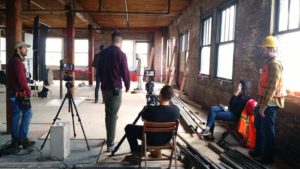
Wed 18 Sep 2013
Posted by admin under ACGIH, Exposure, Federal OSHA, Hearing Conservation, hearing protection, Management, NIOSH, Noise, OSHA, Personal Protective Equip (PPE), Safety Programs, TWA, Uncategorized
Comments Off on Hearing loss prevention, in construction
It’s sad to say, but many construction companies have not yet started a formal hearing conservation program. Their solution is to purchase the best earplugs, for the lowest cost, and give them away like candy.
As I’ve mentioned before: Sometimes OSHA’s rules are protective (meaning: you will be safe) and other times they are really not on par with the health research. Hearing loss and OSHA’s method of measuring noise are NOT protective to employee health (your hearing). For the best method of measuring noise, look to the recommended guidelines of the ACGIH. In order to get the exact parameters, you must purchase their Guide to Occupational Exposure Values (TLVs) booklet. It hasn’t changed (at least for noise) for a few years, but it is still the most up to date on health for your hearing. Here’s a summary of some differences:
- Exchange rate (how noise doubles and is averaged over time)
- OSHA uses 5, ACGIH uses 3 >>which means noise doubles every 5, or 3 dB increase
- this makes a BIG difference in your accumulated average noise level (TWA).
- Exposure Limit, or Criterion Level
- OSHA says 90 dBA, ACGIH says 85 dBA
- Doesn’t seem too different (-5), but remember noise is logarithmic and it’s measured different by OSHA & the ACGIH
NIOSH also has some guidelines, which are very similar to the ACGIH.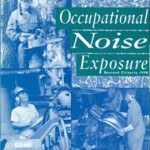
There are some strong benefits to having a hearing conservation program. Here are some examples and suggestions for bettering your own program.
If you have worked in construction for any period of time, you know how loud it can be, and how much exposure is out there. Don’t assume working in this industry that hearing loss will to happen to you. Do something about it. Here’s a presentation from CDC/NIOSH a few years back on how to start.
Sat 12 Jan 2013
Hair growth for your ears! This type of hair growth is different than the hairs which grow longer as you get older…Â 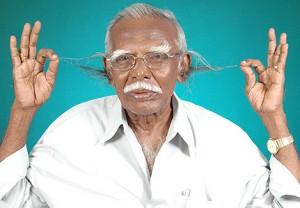
The problem with most types of hearing aids, cochlear implants, and other types of enhancements is that they only amplify the body’s ability to hear. I talked about a type of pill we someday might be able to take that helps, here.
Research has found a way to regrow the hairs in your ear…well, at this point, only in mice. But, in theory, you could put these hair growth cells in the part of your ear where you have the most damage…and, well, it might help!
The summary article is here. The original article is here. And, to nerd-out, here is the research paper.
Mon 22 Oct 2012
As you might be aware, there is a loudness of noise which your ears cannot be protected against. Your body’s system of preventing the sound waves from entering your ear are just too much for it to handle. As the noise (sound pressure) hits your inner ear the bones convert the physical energy (noise) into a chemical & neurological process so you are able to hear. Ear plugs and ear muffs are not sufficient enough to protect against the amount of noise exposure.
However! Sometime in the future we might have a pill to prevent this type of hearing loss.
Researchers have found that the chemicals, D-methionine, ebselen & N-acetylcysteine, battle chemical stress on your ears.  We are still a long way from being able to take a pill to avoid hearing loss. They must go through more testing and the FDA approvals.
But, isn’t that cool!?
Wed 17 Oct 2012
Posted by admin under Admin Controls, Air Monitoring, Concrete, confined space, Engineering Controls, Exposure, Federal OSHA, fit testing, Hazard Communication, Hearing Conservation, hearing protection, Management, Noise, OSHA, Permit Required, Personal Protective Equip (PPE), Respirators, Safety Policies, Safety Programs, Silica, Training, Uncategorized, ventilation
Comments Off on Ready Mix Drum Chipping
If you operate a ready-mix plant and have concrete trucks, you are aware of this process. Once a year (hopefully, only once) a person must climb into the drum of the ready-mix truck and chip off excess concrete. What happen during regular use, is that some concrete hardens, which usually sets-up over and around the blades. Access into the drum is by either the 3×4 hole in the side, or down the chute.
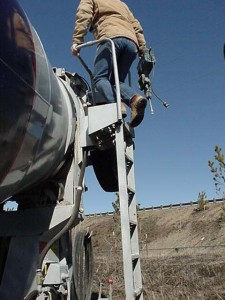
Yes, it is a confined space (def’n: 1. large enough to enter, 2. not designed for occupancy, and 3. limited entry/egress).
Here are a list of the possible hazards:
- silica dust (from chipping concrete)
- noise exposure
- hazardous atmosphere (curing concrete uses up oxygen, which we DO need BTW)
- slipping hazard (drum is round inside)
- heat stress (if you’re trying to do this activity in the summer)
- eye hazard (chipping)
- electrical hazard (if you’re using water & have an electric hammer)
- lock out / tag out (if the truck drives away, or if the barrel starts turning)
There are many resources available (see below). Some things to keep in mind; ventilation (fans, etc) to control the airborne silica dust are usually not effective (too much dust versus exhaust). Water controls are best, but you must limit the amount of water and the direction of the sprayer. I suggest looking at what others have done.
Keep in mind, if you perform this activity you will need (as a company):
- respiratory program (medical, fit test, written plan)
- confined space program (multi gas meter, written program, attendant?)
- lock out /tag out policy or procedures
- training (for each of the above, and for this specific activity)
At this point I know what my contractor-friends are thinking…I will subcontract this out!  ha. If you do, please make sure your sub is doing it right.
Resources:
Georgia Tech – good presentation & guidance
Georgia Tech/OSHA – Safe Work Practices (in Spanish too!)
Teamsters H&S hazards & controls
Illinois DCEO – Consultation on ready mix cleaning
Thu 4 Oct 2012
Posted by admin under ACGIH, Exposure, Hazard Communication, Hearing Conservation, hearing protection, Management, PEL (Perm Exp Limit), Personal Protective Equip (PPE), Safety Policies, Safety Programs, Training, TWA
Comments Off on Do we need a hearing conservation program?
Yes. If you are in construction, I recommend it. Here’s why:
First, the rules. OSHA does NOT have a specific construction standard for hearing conservation. Why does this matter? Well, the current OSHA rules state that if you have 1 day (that’s only one day) of average noise level above an average of 85 decibels A-weighted (dBA),  called the Action Limit, you are required to start a program. Obviously noise levels vary on construction jobsites. I’d guess that most projects have at least one day of levels above 85dBA’s.
called the Action Limit, you are required to start a program. Obviously noise levels vary on construction jobsites. I’d guess that most projects have at least one day of levels above 85dBA’s.
And, these particular OSHA rules are terrible. Well, they are terrible if you care about your hearing. (see my earlier post). The rules are simply not protective enough. If you are exposed to noise for 8-hours a day at 90 dBA (the OSHA average exposure limit) you WILL have hearing loss (this is without hearing protection). Does that seem like a very protective rule? Â I’ve heard talk about them changing it, but…I doubt it will ever happen.
Second, let’s consider cost vs. reward. To start a hearing conservation program you must measure your employees hearing , called audiometric testing (and do a few other things). It costs approximately $20/employee to do this per year. Compare this with the average claim (of hearing loss) cost of around $20,000. So, if you have 20 employees, and it costs you $400/year…it takes about 50 years to pay yourself back for NOT starting a program. ($20,000/400= 50 years)
Third, consider your employees. Having their hearing checked may seem like a hassle and a worthless exercise, but, some will appreciate it. I’ve found that employees like to know how they are hearing. It’s good if your employer cares how well you hear. It’s also a yearly reminder in hazard awareness to noise.
Because in construction, we know there’s noise!
If you’re dead-set on NOT having a program, you’ll need documented noise dosimetry for each employee, job task, and possible overexposure above 85 dBAs. It is possible  for a construction company to avoid having a program, but you have the burden to prove there isn’t noise. Call your favorite industrial hygienist for help.
Wed 25 Jul 2012
As I have said in an earlier post, some OSHA, EPA, and MSHA rules are a good fit. They blend well with health research, scientific technology, good practices, and a low-cost-of-compliance for employers. Other rules are just bad. They are  totally out of date, not protective enough, or just not feasible/practical. Here’s my plug for a good safety manager/industrial hygienist – A good one will know which rules/guidelines to follow.
The New York Times (July 19, 2012, Cara Buckley) recently wrote an article on the US noise standards which are not protective enough for employees. In construction we also have three additional problems.
- hearing loss is expected (or at least assumed in certain fields – carpenters, sheetmetal, ironworkers, etc.) and,
- work shifts are usually over 8-hours. Noise exposure is usually calculated on an 8-hour time weighted average. During the busy months, an 8-hour work day is rare. It’s at least 10, maybe 12-14 hours. This doesn’t allow your ears to “rest” between shifts. For more information on extended work shifts go here.
- extracurricular activities contribute to overall hearing loss – my point is that most construction workers don’t sit at home at the end of their shift. Almost everyone I know in construction is involved in one of these activities: hunting, shooting, motorcycles, water sports, yard work, cars, wood working/cutting, concerts, music, etc. Each of these activities contribute to their overall hearing loss, and again, doesn’t allow your ears to “rest”.
…which reminds me that I need to keep a set of ear plugs in my motorcycle jacket.

Tags: ACGIH, dBA, dosimeters, EPA, hearing loss, IH, noise, OSHA, safety, sound, sound level, standards, TWA
Wed 30 May 2012
Posted by admin under Hearing Conservation, hearing protection, Noise
Comments Off on Noise Monitoring – FAQ / Q&As
I get the best questions from employees as I’m setting them up to wear a dosimeter. (FYI- this does not really apply to sound level readings, only dosimetry)
- Why do I have to wear the monitor (dosimeter)? Can’t we just place it in the middle of the area?
Ideally we want the dosimeter to measure the individual exposure. Many factors influence the average noise level, including work practices, location (sound bouncing & dampening), height, proximity to others, equipment, etc.
- What is the dosimeter actually measuring?
A dosimeter measure the sound pressure level, measured in decibels A-weighted, dBA (usually). It can record this level and average it (usually) for every 1 minute period. The amount of information it gathers is staggering…and confusing.
- What if we work a longer shift (more than 8 hours) will the results of the noise monitoring be the same?
Yes, the results are (usually) given as an average. So, in theory, if you measure the noise for 15 minutes and it is the same for the next 7.75 hours, it should be the same. However, if you work more than 8-hours a day OSHA actually decreases the amount of noise you can be exposed to. They have a table (G-16)  that attempts to explain it.  If you know the average level of noise (say it’s an average of 95 dBA 8-hour TWA), then you can determine the time you are allowed (answer: 4 hours).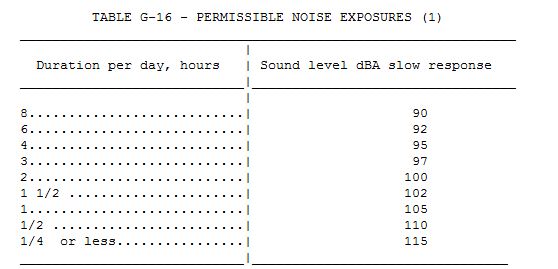
- How often should noise monitoring be performed?
There is not a specific rule from OSHA on how often you must monitor. However, the guideline is yearly. Â Or if/when significant changes occur “which might effect the results of this testing” (I always use this statement in my reports).
- Which individual employees should have their noise level measured?
It is best to let the industrial hygienist make this determination (there are several good reasons). If you are just starting out, they will often choose an average, or those who might have the highest noise level exposures.
- I’m wearing hearing protection, why don’t they take that into account when they determine the average readings?
Your exposure is determined without regard to the specific type of hearing protection used. If you are wearing the wrong type of hearing protection, or if it is worn incorrectly, you could still have this exposure.
Wed 16 May 2012
Posted by admin under Management, Mines, MSHA, Noise, Silica
Comments Off on MSHA Crushing Season
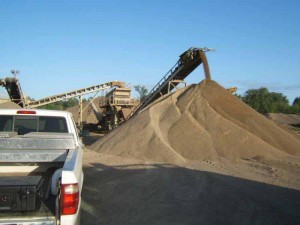
Here in the Northwest, rock crushing definately has a season…and that season is now. Road crews are getting set up and now is the time to make sure you get everything is in order…before the MSHA inspector shows up.
Below is my safety punch-list, specific to industrial hygiene:
- Training – I know it’s required for MSHA sites, but double check. Does everyone have it? What about contractors onsite?
- Water controls working & in place? The dust isn’t bad, yet.
- Air monitoring for silica – done it yet? Are you at a new location? New part of the quarry? Better do it again.
- Miner’s hearing checked (audiogram taken?). Anyone with a threshold shift? Make sure you follow up with another test.
- Are the air conditioning units working in the vehicles? – if they’re not= the windows will be down = noise levels WILL be up.
- Noise monitoring (dosimetry) performed 8-hour time weighted averages? If you don’t do it, MSHA will (maybe will be citation too).
- Is your shop done hardfacing the equipment? see my earlier post here.
- Paperwork in order?
Be safe out there!







